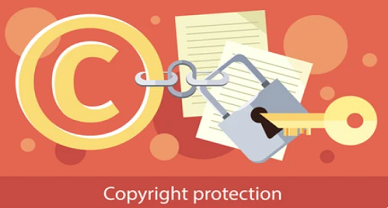Preserving Indian Culinary Creations; A Perspective Through Copyright
Introduction
India has a rich culinary legacy, in recent times, the growth of Indian cuisine has seen a tremendous commercial surge both domestically and internationally which has led to an increased need for the protection of recipes to ensure their authenticity and provide ownership rights to the actual creator of the recipe. This is where protection of intellectual property comes into the picture.
Main Body
The subject matter of copyright protection is the literary, artistic, dramatic, musical, and cinematographic films and sound recordings, whichare governed by the Indian Copyright Act, 1957 which allows creators to distribute, reproduce, sell, assign, and display their work by ensuring the protection of their intellectual property. In most European languages other than English, copyright is widely known as the ‘Author’s right.
[Image Sources: Shutterstock]
The first and foremost requirement to ensure copyright protection is the originality of the content and its expression or publication, not the mere thought or an idea. In the context of Recipe publication, the ownership of the copyright shall remain with the Author of the copyright. However, in this context, the ingredient list, and the process — shall not fall under the shelter of copyright protection only the creative delivery and the images used to showcase the preparation of the recipe shall be protected by the medium of copyright laws in India.
Legal Perspective
Copyright protection of individual recipes and their publication specifically remain unaddressed by the Indian Judiciary and Legislation. Recipes and culinary skills are duly considered as creative expression yet they do not meet the criteria for copyright protection. We are aware that copyright is given to the original creator of a literary or artistic work and that recipes are just personalised interpretations of existing ideas, which suggests that it is common knowledge, hence it lacks the first requisite i.e. originality to be eligible for protection under copyright. So only the creative elements accompanied by the recipe can be authorised by copyright protection like some specific tips added with the cooking instructions.
The mere listing of ingredients and instructions for cooking a dish does not amount to copyright infringement. Only and only when the recipe is accompanied by any original or creative elements such as a unique method of preparation or a specific set of ingredients or their order of addition etc., shall it be granted copyright protection.
We can infer that the following are essential elements required to ensure copyright protection for a recipe –
- Originality – A food recipe is usually considered common knowledge, one must ensure that their recipe adds that one unique element, method of cooking, or a sequence that makes it different and more tasteful than the rest, this ensures the originality of the content of the recipe.
- Creative expression – The mere idea of a recipe is not eligible for a copyright, its expression is of utmost importance whether it is in a verbal or written format using videos or images etc.
- Publication – After ensuring the work is creative and original the expression of such an idea and its publication is a crucial element to seek protection of such work. If a work is hidden from the public, then the prospect of its protection does not remain so essential as the chances of infringement are low.
The absence of sturdy laws regarding this aspect leads to ambiguity and hurdles to ascertain copyright protection for their original creative food recipe. A few of such challenges are highlighted below-
- Non-protection of functional elements- As mentioned recipes are usually not original creations, they are just modifications making the final result something unique, the exception to such cases is actual creation but proving such a fact is a feat to achieve because history is involved.
- Fair use – When the literal imitation is not the replica but there exists tremendous resemblance with an original work it’s sufficient to establish the infringement of copyright. The right to fair use is an exception to the infringement of copyright.
Conclusion
Enforcing copyright can be challenging, especially when violations occur online. Monitoring and pursuing copyright infringement can be resource-intensive. We are aware that there is a lack of sturdy legislation, the most effective way to protect the copyright is to ensure the correct agreements are signed between the parties which establish ownership rights. In today’s time when everything is easily available on the internet culinary artists and chefs should ensure protection of their creation especially of intellectual property rights when they can easily monetize and commercialise their creation which is one attractive factor which copyrights promise.
Author: Abhiruchi Lakras, in case of any queries please contact/write back to us at support@ipandlegalfilings.com or IP & Legal Filing
References
- The Leaflet. (2022, November 30). Protecting Recipes: Gaps in Indian Laws.
- Copyrightlaws.com. (2022, October 12). Copyright Protection in Recipes.
- IPleaders Blog. (2022, September14) Can Recipes Be Copyrighted: All One Needs to Know.
- NMIMS Law Review. (2021, February 9). Intellectual Property in the Culinary Industry: An Indo-American Perspective.
Bradley.com. (2019, July). Intellectual Property Protection for Recipes.



